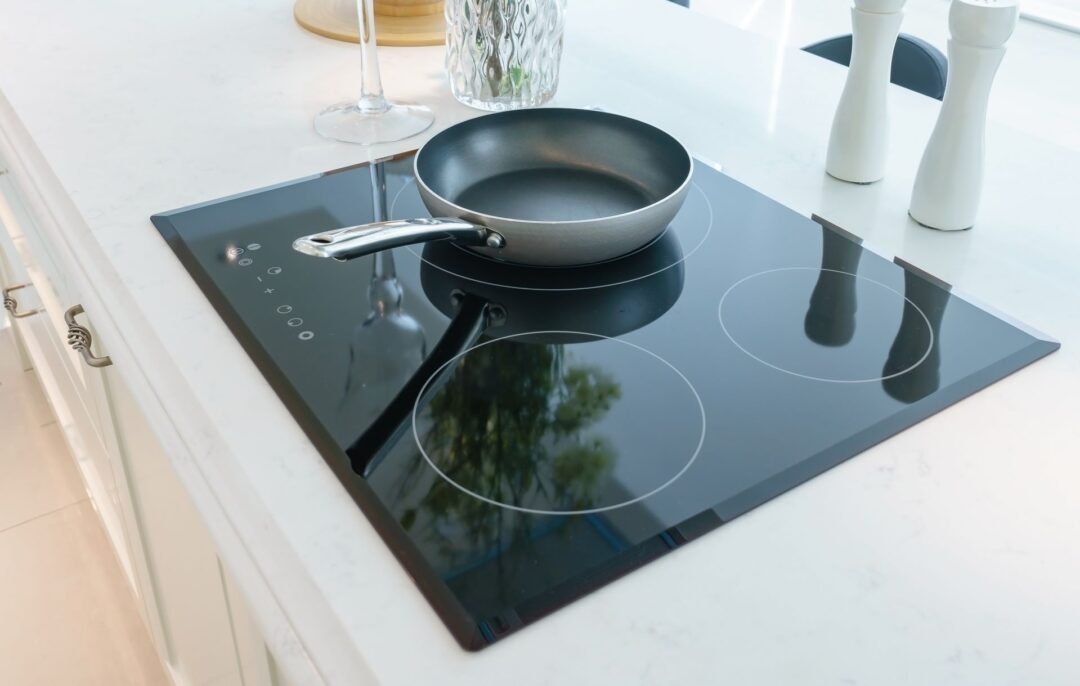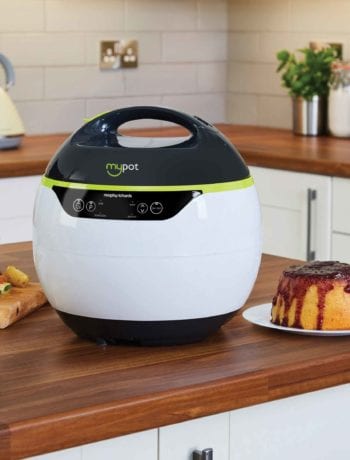A clean, sparkling induction cooktop enhances your kitchen’s aesthetic appeal and ensures optimal performance and longevity. Maintaining a hygienic cooking surface is essential for a healthy cooking environment and efficient heat transfer.
This article will walk you through the complete process of how to clean your induction cooktop to achieve that coveted sparkle. From daily maintenance to deep cleaning techniques, we’ll equip you with the knowledge and tips to keep your induction cooktop looking its best. Get ready to transform your kitchen into a gleaming culinary haven.
Induction Cooktop Cleaning Requirements
Induction cooktops come in various surface materials, including ceramic and glass.
- Ceramic surfaces are durable and resistant to scratches but may be prone to staining if spills aren’t promptly cleaned.
- Glass induction cooktops are sleek and stylish but can be more susceptible to scratches.
Regardless of the surface type, avoiding abrasive cleaners, harsh scrubbing tools, or excessive force is important to prevent scratching or damaging the induction cooktop.
Understanding the different types of induction cooktop surfaces and their cleaning requirements is essential. However, if you’re in the market for a new induction cooktop or looking to upgrade your current one, there are more to consider. Ensure to check out the induction cooktop reviews before shopping to find a perfect blend of ease of use and cleaning, price, precise temperature control, and energy efficiency.
How to Clean Your Induction Cooktop from Stain to Shine
Daily Maintenance
Daily maintenance plays a crucial role in preserving the pristine condition of your induction cooktop. You can prevent stains and damage by following a few simple steps, ensuring a clean and efficient cooking surface.
Wiping spills immediately
Promptly cleaning up spills is essential to prevent them from hardening and causing stubborn stains. Keep a soft cloth or paper towel handy in the kitchen to quickly wipe away any spills as soon as they happen. That prevents the spills from seeping into the surface and causing discoloration or damage.
This immediate action is particularly effective on kitchen surfaces, where spills are frequent. If you’re using glass splashbacks – a popular choice for its sleek appearance and easy maintenance – this quick response is even more beneficial. Glass surfaces can show smudges and spills more than other materials, but they clean up beautifully with little effort. Just as you would with a glass hob, a simple spray of glass cleaner and a wipe with a soft cloth can remove spills from a glass splashback, keeping it sparkling clean. This habit not only maintains the kitchen’s aesthetic but also prolongs the life of the splashback, preventing etching or staining that can occur from acidic substances like lemon juice or tomato sauce.
Removing loose debris
Removing loose food particles or debris is important to maintain a clean cooktop. Use a soft cloth or a gentle brush to sweep the debris from the surface carefully. Be mindful not to apply too much pressure or use abrasive materials that could scratch the cooktop. During subsequent cooking sessions, this step helps prevent debris from burning or adhering to the surface.
Taking a few moments to wipe away spills and remove loose debris daily will help maintain the cooktop’s appearance and prevent the need for more intensive cleaning in the future.
Routine Cleaning
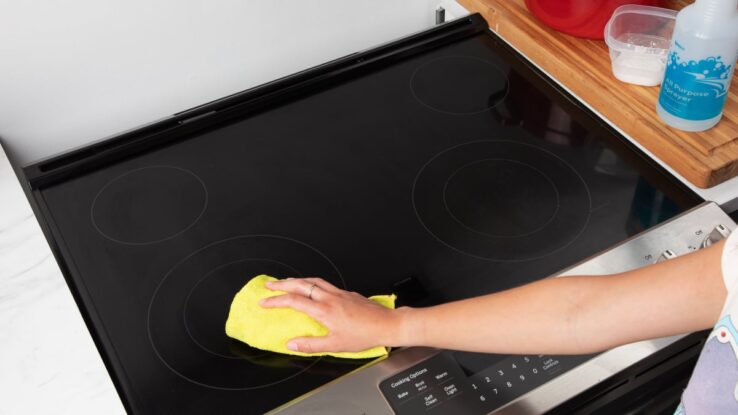
Source: reviewed.usatoday.com
Routine cleaning is essential to keep your induction cooktop in top shape. You can maintain a spotless and efficient cooking surface by following a step-by-step cleaning process and using the right cleaner.
Choosing the Right Cleaner
When cleaning your induction cooktop, selecting non-abrasive cleaners specifically designed for smooth surfaces is important. Avoid using harsh chemicals or any abrasive cleaners that can scratch or damage the cooktop. Look for gentle cooktop cleaners or mild dish soap diluted with warm water. These cleaners effectively remove grease and grime without harming the surface.
Step-by-step Cleaning Process
To clean your cooktop, follow these detailed instructions:
Step 1 – Ensure the cooktop is cool: Before cleaning, make sure the cooktop has cooled down to avoid the risk of burns.
Step 2 – Remove any loose debris: Use a soft cloth or a gentle brush to remove loose food particles or debris from the surface.
Step 3 – Apply the cleaner: Apply a small amount of the chosen non-abrasive cleaner to a damp cloth. Alternatively, you can apply the cleaner directly to the cooktop surface.
Step 4 – Gently clean the surface: Wipe the cooktop surface using the damp cloth in circular motions. Pay attention to each area, including burners, controls, and other exposed parts. Be gentle and avoid applying excessive pressure.
Step 5 – Rinse and dry: After cleaning, rinse the cloth with water and wipe the cooktop surface to remove any residue. Finally, use a dry cloth to thoroughly dry the surface to prevent water spots or streaks.
Dealing with Stubborn Stains
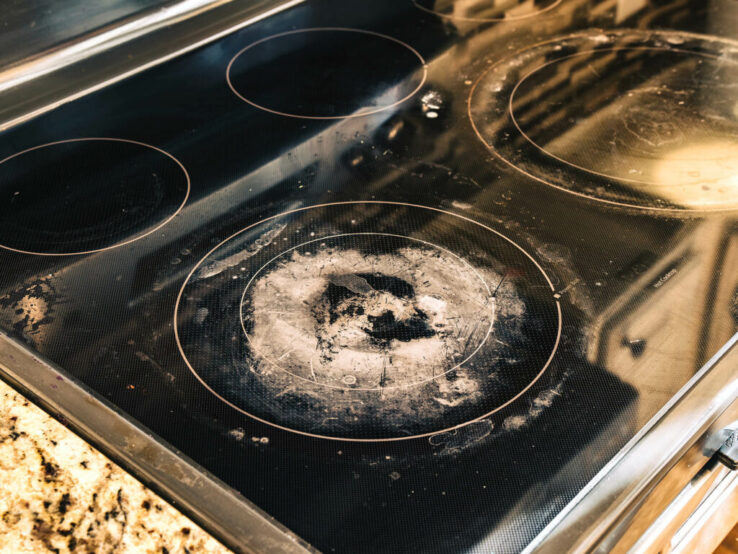
Source: barkeepersfriend.com
Sometimes, tough stains may require special attention. Here are a few effective methods to tackle stubborn stains:
- Vinegar solution: Create a mixture of equal parts vinegar and water. Apply the solution to the stained area and let it rest for a few minutes. Gently scrub those stains with a soft cloth or sponge, then rinse and dry the surface.
- Specialized cooktop cleaners: Consider using specialized cooktop cleaners designed to tackle tough stains. Follow the manufacturer’s instructions for application and cleaning.
Always test any cleaning solution on a tiny, inconspicuous area of the cooktop before using it extensively. That ensures compatibility and prevents potential damage.
Deep Cleaning
Periodic deep cleaning of your induction cooktop is essential for maintaining its optimal performance and appearance. A deep cleaning helps remove built-up grease, grime, and stubborn stains that routine cleaning may not address effectively.
Depending on your cooking frequency, deep cleaning should be performed every few weeks or as needed.
Removing Grease and Grime
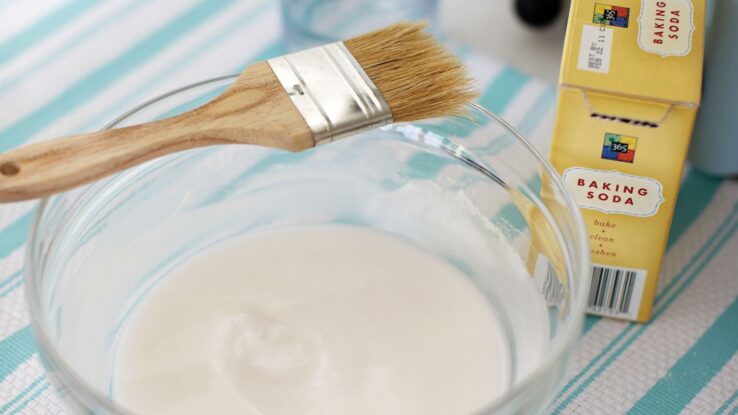
Source: marthastewart.com
To tackle built-up grease and grime, there are several effective techniques:
- Degreasers: Use a non-abrasive degreaser specifically formulated for cooktop surfaces. Follow the product’s instructions and apply it to the greasy areas. Allow it to sit for a few minutes to loosen the grease, then gently scrub with a soft cloth or sponge. Rinse and dry the surface thoroughly.
- Baking soda paste: Combine the baking soda and water until it forms a thick consistency. Apply the paste to the greasy areas and let it sit for a while. Gently scrub the grease with a soft cloth or sponge, then rinse and dry.
Cleaning Ventilation Systems
Your cooktop’s ventilation or fan system is critical for maintaining optimum airflow and minimizing the development of smoke or odors. To clean it effectively:
- Please turn off the cooktop and ensure it is cool before cleaning.
- Remove any removable parts, such as filters or grates, and clean them according to the manufacturer’s instructions. That may involve soaking them in warm soapy water or using a dishwasher if suitable.
- Use a soft brush or brush attachment vacuum cleaner to sweep away dust or debris from the ventilation area. Be gentle and thorough in your cleaning.
- Wipe down the surrounding areas with a damp cloth to remove any residue or dirt.
Removing grease and grime and cleaning the ventilation system helps maintain its performance, efficiency, and overall functionality. A clean cooktop enhances your cooking experience and keeps your kitchen looking fresh and inviting.
Recap
In conclusion, knowing how to clean your induction cooktop is essential for maintaining a sparkling kitchen and prolonging the life of your appliance. By following our easy step-by-step guide and the recommended cleaning techniques, you can keep your cooktop looking brand new and improve its performance. Don’t forget to clean regularly and promptly treat any spills or stains to ensure a spotless and hygienic cooking space. Happy cooking, and enjoy your immaculate induction cooktop!

